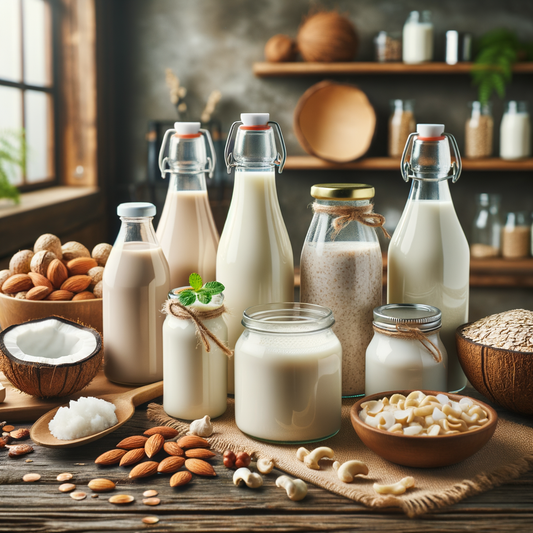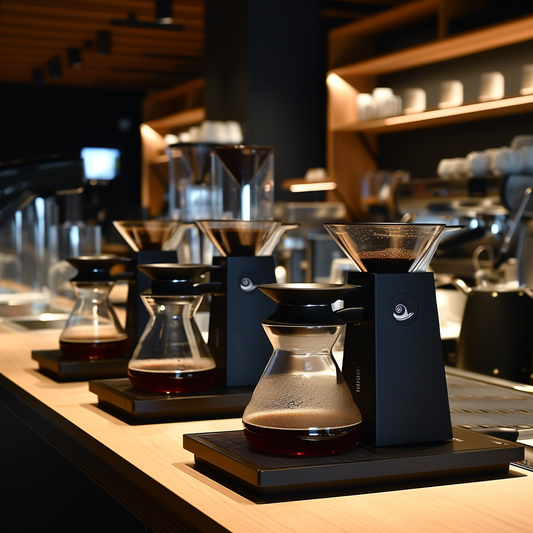Are you looking to develop your tasting palate and add nuance to your coffee experience? If so, you might be ready to enter the world of brewing and tasting single-origin coffees. Let's dive in and discover what's making all the buzz in the premium coffee world.
Why is Single-Origin Coffee So Good?

Single-origin coffee is prized among coffee aficionados for its exceptional taste, with each cup reflecting the unique characteristics of its specific geographic origin. Much like fine wine, these coffees stand out for their nuanced and distinct flavors.
You'll often hear descriptive and evocative language describing these flavors. Terms like fruity, nutty, chocolaty, and more are used to categorize specific coffees into families defined by their unique characteristics.
With so many factors contributing to a great pour of single-origin coffee, you'll quickly discover there is no one correct answer for why single-origin coffee is so good. Instead, it presents an opportunity to explore and experience a wide range of beautiful and distinct flavors. With dedication and persistence, you'll uncover the perfect cup for your preferences.
What Does Single-Origin Coffee Mean?
Single-origin coffee refers to beans from a specific region, farm, or producer in a single geographical location. The significance of single-origin coffee lies in its traceability, offering transparency about its cultivation and processing.
This allows the unique regional characteristics of each bean to shine through. The nutrient content of the soil, the nature of the climate, and the cultivation methods used all play a key role in developing the unique flavor and provide the coffee drinker with unique and discernable flavors to experiment with and enjoy.
The Difference Between Single Origin Coffee and Blends
Single-origin coffee provides a distinct and specialized taste experience that can vary greatly. At the same time, blends are a combination of beans from various regions that aim to achieve a balanced flavor. Blends are created to maintain a consistent taste throughout the year.
Therefore, personal preference is king when deciding between single-origin coffee vs. blends. Single-origin coffee is more suitable for those who enjoy unique and diverse flavors, while blends are preferred by those who prefer a consistent and well-rounded cup.
Pros and Cons of Single Origin Coffee vs. Blends

Read below to learn some of the unique facets that make Single-origin and coffee blends stand out and how you can make a better decision about which to choose.
Pros Single Origin Coffee
- Unique Flavors: Single-origin coffee beans offer distinct flavors that reflect their specific growing region. This can lead to a more unique and varied tasting experience.
- Traceability: With single-origin coffee, you know precisely where your beans are coming from. This can assure the quality and ethical production of the beans.
- Supports Local Farmers: Purchasing single-origin coffee often means supporting small, local farmers and their communities.
Cons Single Origin Coffee
- Availability: Single-origin coffee beans can be subject to seasonal availability, which means they may not be available all year round.
- Price: Single-origin coffee can be more expensive than blends due to the costs associated with sourcing from a single place and maintaining high quality.
- Consistency: The flavor of single-origin coffee can vary from batch to batch due to factors like weather conditions during a particular growing season.
Cons of Blended Coffee
- Consistent Flavor: Blends are created to provide a consistent flavor profile. This means your favorite blend will taste the same, batch after batch.
- Balanced Taste: Blends can offer a balanced flavor, with no single characteristic overpowering the others. They can combine the best qualities of several types of beans.
- Availability: Blended coffee can be more readily available throughout the year, as it's not subject to the same seasonal limitations as single-origin beans.
Cons of Blended Coffee
- Lack of Traceability: With blends, it can be challenging to know the exact origin of all the beans, which may concern those who value transparency in their coffee sourcing.
- Less Unique: Blends might lack the unique flavor characteristics of single-origin coffee, as they aim to provide a balanced and harmonious taste.
- Quality Variation: The quality of beans in a blend can vary, with lower-quality beans potentially being mixed with higher-quality ones.
The Environmental Benefits of Single-Origin Coffee
Regarding your preference for single-origin coffee vs. blends, consider this: single-origin coffee can offer several environmental benefits. First, the beans often have a lower carbon footprint due to fewer transportation stages from farm to cup. Additionally, many single-origin coffee farms prioritize preserving biodiversity, growing coffee under the canopy of native trees, which provides a habitat for various flora and fauna.
Furthermore, these farms are commonly small-scale operations that prioritize sustainable farming practices. These methods and tactics are favorable to soil health, protect water resources, and reduce the usage of harmful pesticides. So sip with even greater confidence, knowing your single-origin brew is more flavorful and environmentally friendly!
The Social Impact of Single-Origin Coffee

Why is single origin so good? It often fosters direct relationships with farmers, establishing a more transparent supply chain that can lead to better working conditions and fairer pay. Many single-origin beans are sourced under fair-trade practices, ensuring farmers receive a minimum price and contributing to sustainable livelihoods.
Investment in single-origin coffee also often supports local community development, as profits go directly back into the farming regions. This can lead to infrastructure, education, and healthcare improvements in these communities.
How We See the Future of Single-Origin Coffee
The single-origin coffee market is showing promise for the future as more regions are gaining recognition for their unique beans. Consumers are becoming more interested in the taste differences between single-origin coffee and blends, leading to an expected increase in demand for lesser-known origins.
Sustainability is also becoming more important, with innovations such as eco-friendly packaging and carbon-neutral shipping becoming more common. It's an exciting time, and we look forward to a future that values great taste and sustainable, ethical practices behind every cup.





